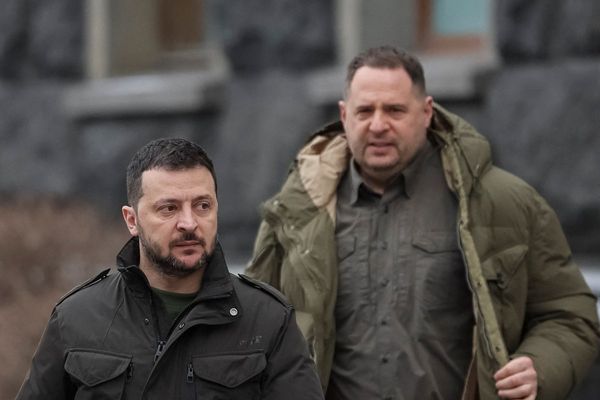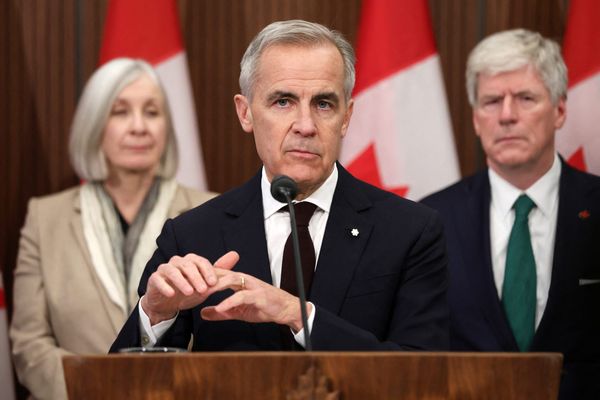
The Greens will choose a new leader after Adam Bandt unexpectedly lost the seat of Melbourne at the federal election.
The party’s 11 senators and their sole remaining lower house MP – Elizabeth Watson-Brown, who held the Brisbane seat of Ryan – will decide on Thursday who should become the minor party’s fifth federal leader, with whoever claims the top job expected to address the media in the afternoon.
Senators Sarah Hanson-Young, Larissa Waters and Mehreen Faruqi are seen as possible successors.
The Greens are not alone in turning over a new leadership leaf this week, with the Liberals electing a new leader in Sussan Ley, while Matt Canavan lost his tilt at the Nationals’ top job.
But unlike their major party counterparts, those involved in choosing the new Greens leader are unusually tight-lipped – ignoring or politely declining calls and texts from the media.
How do the Greens choose a new leader?
If there is only one person vying for each of the top positions – leader, deputy and party whip – there must be consensus from the party room for that person to be chosen. If there is not consensus, another challenger would need to put themselves forward.
If there is more than one challenger for a role, a secret ballot is held and the person with the most votes is selected.
Who are the contenders?
Sarah Hanson-Young – the longest-serving Greens member in the federal parliament – is among the contenders.
The South Australian senator has leadership ambitions, a number of Greens insiders said, and is thought to be canvassing support for the role.
The party’s environment spokesperson is seen as a pragmatist and able to work with the major parties – as noted by those watching her work with Labor’s former environment minister, Tanya Plibersek, on the now-dumped environment protection agency model.
New South Wales senator Mehreen Faruqi is seen as another potential future leader, with a strong passion for social justice issues. The party’s current deputy leader was outspoken on Gaza in the most recent term of parliament and is supported by the more activist NSW branches.
Faruqi joined the upper house in 2018 after the former NSW Greens senator Lee Rhiannon stepped down upon losing the party’s top Senate ticket spot. Faruqi was re-elected as senator at the 2019 federal election and again in 2025.
This week, the Greens’ First Nations network and the NSW Young Greens both endorsed motions supporting Faruqi as the party’s federal leader, despite party members having no official say in the matter.
Larissa Waters is seen as the reluctant leader – a long-serving Queensland senator and Senate leader for the Greens who could work as a unifying figure in the same way as Bandt.
First elected in 2011, Waters briefly resigned in July 2017 during the parliamentary eligibility crisis due to discovering she held Canadian citizenship. She was re-elected in September 2018.
Party insiders say she could be a fresh face who can carefully tread both environmental and social justice pathways for the minor party in the lead-up to the next election.
Waters was reticent about her interest in serving as the party’s head on Tuesday.
“We’ve got a process to go through and I won’t be making any comments about that,” Waters said, according to the ABC.
“I’m afraid you will just have to wait until Thursday.”
Hanson-Young, Faruqi and Waters did not respond to requests for comment.
The acting leader and party whip, Nick McKim, a Tasmanian senator since 2015, is understood to not be seeking the leadership.
Could the leadership be shared?
The Greens have previously had co-deputy leaders, with Waters having served alongside Bandt, McKim and former senator Scott Ludlam at various times between 2015 and 2022.
Since June 2022, Faruqi served as the sole deputy leader to Bandt but a job-sharing arrangement could allow for another pathway forward to reach consensus.
Green parties in New Zealand, Canada and the UK have had co-leaders in recent years, though they have no official connection or affiliation with the Australian party.
Is this situation unusual?
While leadership contests are common in the major parties, it’s a process this generation of the progressive party is not familiar with.
Since party forefather Bob Brown’s retirement in June 2012, there have only been three federal leaders of the Greens – including Bandt.
Each time, there’s been an informal succession plan in place. A leader makes a decision to retire when another rising star is ready to take the mantle.
That first star was Christine Milne, who took over from Brown in 2013 until her retirement in 2015, when Victorian senator Richard di Natale led the party.
Bandt was also elected as party leader unopposed in 2020 after Di Natale vacated his Senate seat, leading the party until his surprise defeat to Labor’s Sarah Witty.
Di Natale, Brown and Milne would not be drawn on who should be the next leader.







